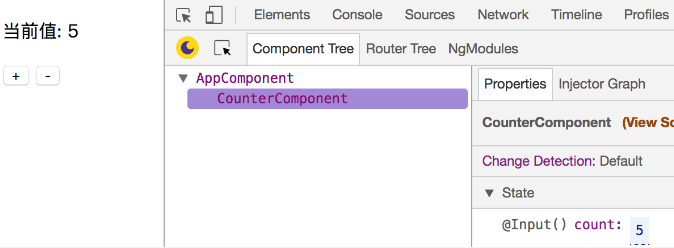class A {
no: number[] = [1, 2, 3];
lognumber() {
this.no.forEach((nos) => { // foreach statement
document.write(" number=:" + nos);
})
}
}
window.onload = () => {
var call = new A();
call.lognumber();
} 
Angular 2 Input A
Input 是属性装饰器,用来定义组件内的输入属性。在实际应用场合,我们主要用来实现父组件向子组件传递数据。接受任何数组对象,检查,更新
import { Component, Input } from '@angular/core';
@Component({
selector: 'exe-counter',
template: `
<p>当前值: {{ count }}</p>
<button (click)="increment()"> + </button>
<button (click)="decrement()"> - </button>
`
})
export class CounterComponent {
@Input() count: number = 0;
increment() {
this.count++;
}
decrement() {
this.count--;
}
}import { Component } from '@angular/core';
@Component({
selector: 'exe-app',
template: `
<exe-counter [count]="initialCount"></exe-counter>
`
})
export class AppComponent {
initialCount: number = 5;
}
2





















 3083
3083











 被折叠的 条评论
为什么被折叠?
被折叠的 条评论
为什么被折叠?








